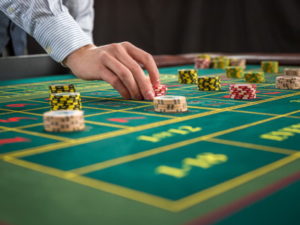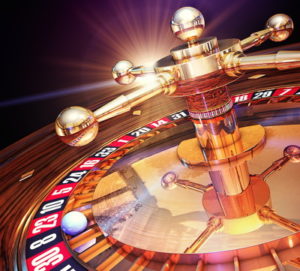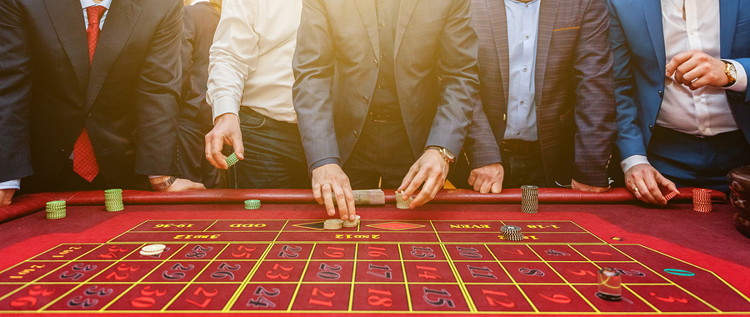What Is La Partage and En Prison In French Roulette?
 In the world of roulette, most of the rules are introduced to favour the House. In Las Vegas, for example, triple zero roulette wheels have become more and more common, with customers still willing to play them in spite of the fact that the use of a third zero shifts the odds even further towards the House. The one exception to this is French roulette, which offers punters the chance to take advantage of the la partage and en prison rules. This haves the odds for House when it comes to Even money bets, meaning everyone should play it when they have the option to.
In the world of roulette, most of the rules are introduced to favour the House. In Las Vegas, for example, triple zero roulette wheels have become more and more common, with customers still willing to play them in spite of the fact that the use of a third zero shifts the odds even further towards the House. The one exception to this is French roulette, which offers punters the chance to take advantage of the la partage and en prison rules. This haves the odds for House when it comes to Even money bets, meaning everyone should play it when they have the option to.
In essence, the la partage rule says that customers that bet on an Even money wager, such as red or black, will only lose half of their stake when the roulette ball lands on zero. En prison is a variation on this, stating that the money will remain ‘in prison’ for the next spin. If the ball lands on the correct colour then the person will have their stake returned to them in full. If, on the other hand, it lands on something that makes it a losing bet then the punter will lose their stake in its entirety. As the ball spins, the stake has a marker on it, indicating that it is ‘en prison’.
The Origins Of French Roulette
 In order to get a sense of where the la partage rules came from, it is worth going back to the origins of roulette as a game. As the name of it suggests, roulette began life in France during the 1600s. A mathematician named Blaise Pascal wanted to create a machine of perpetual motion, which is how the roulette wheel itself was created. Throughout the 17th and 18th century, roulette was played with the wheel created by Pascal, giving punters the chance to bet on what, exactly, the ball would land on when its motion stopped.
In order to get a sense of where the la partage rules came from, it is worth going back to the origins of roulette as a game. As the name of it suggests, roulette began life in France during the 1600s. A mathematician named Blaise Pascal wanted to create a machine of perpetual motion, which is how the roulette wheel itself was created. Throughout the 17th and 18th century, roulette was played with the wheel created by Pascal, giving punters the chance to bet on what, exactly, the ball would land on when its motion stopped.
In 1842, Francois and Lois Blanc came up with a radical re-design of the table, adding a zero to it. This was done in order to increase the House Edge, having been requested by King Charles III of Monaco. This move generated a large income for Monaco, cementing its place as one of the chief gambling cities in the world. The fact that France had introduced a gambling ban not long before also saw Monaco’s popularity increase, with roulette becoming more popular around Europe with every passing week.
The game also made the leap across the Atlantic Ocean to America during the 19th century. In the US, though, a single zero didn’t offer the House enough of an Edge. As a result, they added a second zero. This meant that there were 38 numbers on the board instead of 37, though the payout for landing a single number remained at 35/1.The House’s Edge had become unbeatable when it was already impressive enough. Impressive isn’t always enough for casinos, though, hence the adjustments made to the American version of the game.
La Partage & En Prison Explained

If you want to play roulette, the very best thing that you can do is to find a casino that offers French roulette. This is a different version of the game to American roulette, as you might imagine, and European roulette, which might be a slight surprise. We can dismiss both American roulette and the new version of triple zero roulette, given that they boast an obvious difference to both European and French roulette. Those two versions of the game, meanwhile, are very similar to each other, insomuch as they both have a single zero on the table.
Whereas in traditional European roulette the ball landing on the zero would signal that all bets on the table other than on the zero itself are losers, things work slightly differently in French roulette. It is common for French roulette to offer la partage rules, which includes both la partage and en prison. These rules give punters an opportunity to get at least some of their stake back, depending on what happens next. La partage means that players who have bet on Even money wagers will get half of their stake back if the ball lands on zero.
That is to say, those that have bet on the likes of red or black, even or odd or high or low will get half of their original stake returned to them in instances when the ball lands on zero. In some casinos, there is also the option to put your stake ‘en prison’, or in prison. When you opt for this, a marker is placed on your stake and it remains in play for the next spin. Let us imagine, for example, that you’ve bet on red and the ball lands on zero. You opt to put your stake en prison, so a marker is placed on top of it and the ball is spun again.
If the ball lands on red this time around, you get your stake returned to you in full. If, however, it lands on black, you lose the entirety of your stake. How the bet is treated if it lands on zero again will depend on the House rules. In some casinos, another zero will see stakes that are en prison returned as winner, some will count them as losers and others will allow them to remain en prison. There are even some casinos that will return half the stake in standard la partage rules if the ball lands on zero for a second successive time.
What It Means For Punters
 There is a reason why it is not common to see French roulette tables in casinos around the world, which is that they put the odds slightly more in favour of the bettor. Though the House still has its edge, it is reduced to 1.35% rather than the 2.70% that the House gets on a standard European roulette table. In other words, the Edge on Even money wagers is halved when en prison and la partage rules are in place at a French roulette table. It goes without saying, therefore, that if a French roulette table is available, that is the one to sit at.
There is a reason why it is not common to see French roulette tables in casinos around the world, which is that they put the odds slightly more in favour of the bettor. Though the House still has its edge, it is reduced to 1.35% rather than the 2.70% that the House gets on a standard European roulette table. In other words, the Edge on Even money wagers is halved when en prison and la partage rules are in place at a French roulette table. It goes without saying, therefore, that if a French roulette table is available, that is the one to sit at.
The key thing to remember is that this rule only applies to Even money bets. If you place a bet on a single number and the ball lands on zero, you’re losing all of your stake. If you’re betting in Atlantic City then you might well find that the casino offers its own take on La Partage, wherein you get half of your stake back when the ball lands on either zero or double zero. This shifts the House edge there from 5.26% to 2.63% and, probably for that reason, is limited to certain Atlantic City gambling houses.
En Prison Or La Partage? Which To Opt For

The final thing worth bringing up when it comes to la partage is which of the two options you’re better off going for. That is because most casinos with French roulette as an option will allow you to choose whether to take la partage rules or those of en prison. In short, la partage is marginally better, not least because you could choose to bet your half stake back on the same colour and effectively replicate the rules of en prison, winning your full money back if it’s a winning spin or losing it all if it isn’t.
In terms of the actual stats, the House Edge is 1.35% with la partage and 1.38% with en prison. You might feel like you’re taking the better option with en prison because it could see your entire wager returned to you, but you’re not. Of course, some people might think that they’d just make the same bet again anyway if they take back half of their stake or lose it entirely, in which case the en prison rule allows you to do just that ‘for free’. Ultimately, it will come down to what you think is the most fun variation of the rule.



